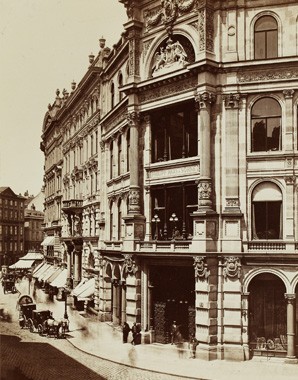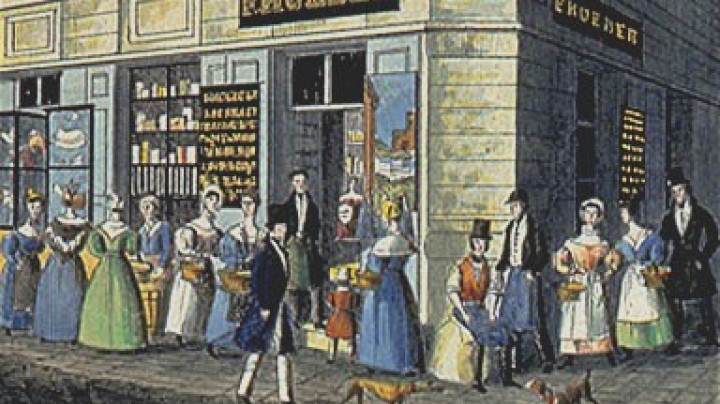Gulden and krone, coins and paper. Or: How did the Empress pay?
Huge sums of money went on the Empress Elisabeth’s many journeys and expensive gowns, so it was fortunate that Ferdinand I had left a considerable fortune.
In some exceptional cases Elisabeth did her own shopping. At least when it came to material for her dresses she often made her choice in the shop itself. She did not pay for the goods. At least not immediately, since it was customary to make out an annual bill for important customers. However, it seems that society ladies were not always very prompt in settling their accounts: for example, one cloth dealer sued Louise of Saxe-Coburg-Gotha because she owed him some 800,000 krone. An enormous sum, if you bear in mind that a senior civil servant earned 7,200 krone per year and an unskilled industrial worker’s annual wages amounted to some 800 krone.
The poorer sections of the population did not always pay immediately either, but had the amount ‘chalked up’. Unlike the upper echelons it was not, however, a matter of expensive gowns but above all of groceries, for which the weekly wage not always adequate.
When payments were made, it was in gulden or krone, with coins or in banknotes. In the years before the First World War there were two currency reforms: in 1857 from gulden in the so-called ‘convention coin’ (Conventionsmünze) to gulden, and in 1892 from gulden to krone. Paper money, which had been in use since around the middle of the eighteenth century, had – at least theoretically – to be covered by an equivalent amount in silver coin. This obligation to redeem paper money was abolished when gulden banknotes were introduced in the reform of 1857.
















